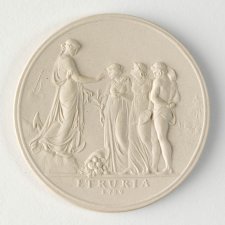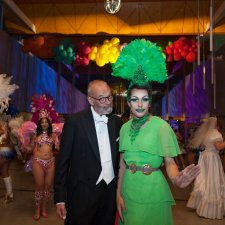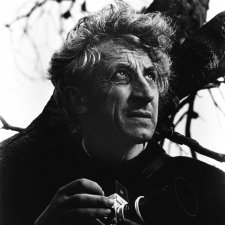
Autumn in Canberra
In Persuasion (1818), a long walk on a fine autumn day affords Anne Elliot an opportunity to ruminate wistfully and at great length upon declining happiness, youth and hope.

The mystery of Enoch Arden
Tennyson's Enoch Arden was inspired by a story that Thomas Woolner passed on to him – but whose story and of whom?

Audacity, audacity, audacity
Angus delves into the biographies of two ambitious characters; Sir Stamford Raffles and Sir John Pope-Hennessy.

The medallion
In recent years I have become fascinated by the so-called Sydney Cove Medallion (1789), a work of art that bridges the 10,000-mile gap between the newly established penal settlement at Port Jackson and the beating heart of Enlightenment England.

The National Portrait Gallery's 20th Anniversary
Last month we marked the twentieth anniversary of the formal establishment of the National Portrait Gallery, the tenth of the opening of our signature building, and the fifth of our having become a statutory authority under Commonwealth legislation.

Home is where the art is
Tedi Bills on how social media in the age of COVID-19 has fanned the flames of our portrait fascination.

The sensational denouement of the case
The Yarra Boot Trunk Tragedy, 12 January 1899The 'Yarra Boot Trunk Tragedy' unfolded a week before Christmas 1898, when some neighbourhood boys noticed a wooden box floating in the river at Richmond.

William Bligh
The life of William Bligh offers up a handful of the most remarkable episodes in the history of Britain’s eighteenth and early nineteenth-century maritime empire.

Giving a dam
True south #1Ensconced and meditative in crisp Tasmania, Joanna Gilmour pays tribute to passionate green advocate and photographer Olegas Truchanas.

Facing the inferno
Tara James speaks to Cam Neville about his portrait series, Firefighters.

The selfie stick
Last week ABC Television came to interview me about selfie sticks. The story was prompted by the announcement that the Metropolitan Museum of Art in New York has lately prohibited the use of these inside their galleries. So far as I am aware we have not yet encountered the phenomenon, but no doubt we will before too long.

The eye and the heart
Nici Cumpston immerses herself in the collective vision of the National Photographic Portrait Prize 2020.

The cost of living luxuriously
In 1904, the Dowager Empress Marie Feodorovna of Russia purchased as a gift for her sister, Queen Alexandra, a fan composed of two-color gold, guilloché enamel, mother-of-pearl, blond tortoiseshell, gold sequins, silk, cabochon rubies, and rose diamonds from the House of Fabergé in Saint Petersburg.

Maria Caroline Brownrigg
At first glance, this small watercolour group portrait of her two sons and four daughters by Maria Caroline Brownrigg (d. 1880) may seem prosaic, even hesitant

Waterloo and Mrs. Moore
Beyond the centenary of the ANZAC landings at Gallipoli, a number of other notable anniversaries converge this year. Waterloo deserves a little focussed consideration, for in the decades following 1815 numerous Waterloo and Peninsular War veterans came to Australia.

Beyond the bow tie
Nathan Faiman delves into the rich life story and legacy of Alan Goldberg.




